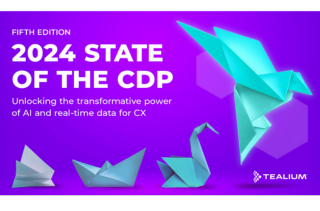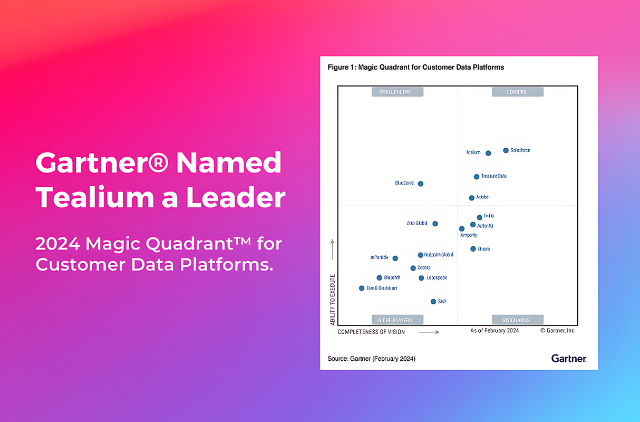The stakes for digital transformation and customer data privacy have never been higher. What’s that mean for deciding what to build and what to buy?
It’s the age-old technology question: what systems do you build and what do you buy? More companies now realize that value that the capabilities a good Customer Data Platform can provide are critical. Every brand needs to connect data to connect to their customers better. If you’re considering building a CDP, what do you need to know before making that commitment as an Engineering, Product, or IT team?
We find that to solve a problem like customer data it requires a hybrid approach: building and buying certain elements to make sure your organization has everything it needs. We’re tipping our (admittedly biased) hand here, but the complexity of building a secure, real-time Customer Data Platform should not be underestimated.
The world of customer data is rapidly evolving, from the loss of third-party cookies to the ever-changing patchwork of consumer data privacy laws.
Let’s take a look at the five main areas you need to consider— and the questions to ask— as you scope out building a Customer Data Platform on your own.
There are 5 key areas to consider before building a Customer Data Platform:
Questions to Ask About the Business Challenges
CDPs play a strategic role for more than marketing departments: they can help solve enterprise-wide challenges around the single view of the customer, privacy compliance, and better insights into the customer experience. Done well, they can help grow your customer base, improve customer loyalty, and increase operational efficiencies.
Here are the high-level business consideration to take into account before building a CDP:
Opportunity Cost: What is the opportunity cost of building this technology in house?
- Engineering resources are a finite commodity. What will your team not be able to do when you commit to owning an in-house CDP?
Marketing Product Scoping and Use Cases: If you’re building to support the Marketing organization, have you surveyed the current and future use cases that will drive your in-house Customer Data Platform? Some of these will include:
- Personalize at scale to drive engagement and improve conversion
- Drive quality growth across the entire customer journey (acquisition, retention, and expansion)
- Optimize budget and resources (ad suppression, tech stack optimization)
Analytics Product Scoping and Use Cases: If you’re building to support the Analytics/Business Intelligence organization, have you surveyed the current and future use cases that will drive your in-house Customer Data Platform? Some of these will include:
- Activate insights throughout the stack in less time
- Uncover relationships with data that may otherwise have been missed
- Inspire trust in machine learning initiatives
Legal Scoping: What are the legal obligations you have towards the data this system will be handling?
- The EU’s General Data Protection Regulation and California’s Consumer Privacy Act are two of the biggest regulations you’ll need to follow, but more states and country’s are coming up with their own regulations as well.
CDPs Help Many Groups
Here are some of the groups that benefit from CDPs to consider:
Marketing, CX and Call Centers
Developers and Tech
Analytics and Data Science
Questions to Ask About the Product
There are over 100 Customer Data Platforms on the market with wildly different capabilities. Some are designed to take in and hold historical data, while others are built for real-time speed. And while all focus on the inputs, the real difference comes when you understand the speed and accuracy of the outputs into different activation channels.
As you decide whether to build— and, crucially— support this product internally, here’s some things you need to know before starting:
Lifetime or Real-Time? Are you building a customer lifetime analysis solution or a real-time engagement solution?
- Real-time is a newer approach to data and an order of magnitude more difficult to build and maintain. It is critical for activating personalized marketing in the right moment.
- Lifetime solutions have been around for decades and the skills to develop them are more readily available in the workforce. They are critical for analytics and other business functions.
- More than likely, it’s both. Understanding the differences between the two can help you better plan your customer data technology strategy.
Enablement vs. Dependent: Are you building a product that enables business users to take action independently or will they need to rely on engineering resources?
- Modern marketing teams will require on-the-fly agility to adapt to the ever-changing consumer landscape.
Features and Integrations: Are you committed to building new features and integrations as business users’ needs evolve?
- Use cases and tech stacks are constantly changing. What will enabling those changes require from your team?
- Does your product need to include built-in execution tools (email, web personalization, etc.), customer journey tools, or content tools if your marketing teams don’t already have those capabilities in native tools?
Privacy Regulations: Do you have the expertise to build according to rapidly emerging consumer data privacy regulations?
- Consent management is a key concern for companies utilizing customer data, and a CDP can help spread consent permissions throughout the tech stack.
CDPs Power Your Business
Unifying customer data and activating it in real time is a powerful thing. It can improve:
Customer Acquisition and Programmatic Advertising
Operational Efficiency and Data Privacy
Customer Insights and Machine Learning Efforts
Questions to Ask About the Project Timeline
Digital transformation has been accelerated in recent months; building, testing, and refining a Customer Data Platform takes a long time.
Here are the key questions you’ll need to have answers for around the timeline:
First Results: Are you expecting to deliver results within the next six months?
- The capabilities of a real-time Customer Data Platform are critical to today’s digital transformation and privacy initiatives. Will building slow these efforts down?
Support Commitment: How long are you committed to supporting and improving this product?
- Customer Data Platforms are designed to be foundational elements of the tech stack and it will need to be treated like a product itself, with regular updates and improvements.
Critical CDP Milestones
These are some key milestones to hit when adding a CDP to your tech stack:
Align Key Stakeholders
Gather Information and Formulate Objectives
Determine Your Segments and ID Resolution Strategy
Define Your Action Plan
Measure and Monitor Progress
Questions to Ask of Internal Customers
Building a CDP means being product owners responsible to internal customers, usually starting with marketing and analytics, but often expanding beyond that.
Here are the questions you’ll need to answer before scoping out the requirements for your custom-built CDP:
Marketing Team Requirements: What requirements will your marketing team have today—and in the future?
- Marketing teams will start with fundamental use cases, and then grow to more complex use cases involving different technologies like machine learning and IoT-connected devices.
Other Team’s Requirements: What requirements will other teams have today—and in the future?
- Customer Data Platforms often start with one department, but grow to support the needs of other departments. How will the priorities of these different departments be handled.
Product Roadmap: Will you build a roadmap for the product and field new requests for features?
- The growing dependence of teams on integrated data will lead to new feature requests. How will you handle the feedback loop for improving the product to meet the needs of internal customers?
Questions to Ask about Key Performance Indicators
Measuring the costs and success of a bespoke Customer Data Platform is crucial to understand before diving in. There are several Key Performance Indicators that IT, Engineering, or Product teams will need to scope out to accurately compare a purchased CDP to a CDP built in house.
Here are some of the metrics you’ll need to consider first:
Total Cost of Ownership: What is the Total Cost of Ownership (TCO), including maintenance, labor, and product upgrades?
- These maintenance and upgrade costs of an in-house CDP can quickly outpace the initial purchase price of a CDP.
Time-to-Value: What is the projected Time-to-Value (TTV) for the project?
- Purchased solutions can deliver value within weeks of signing a contract.
Internal Rate of Return: How does the Internal Rate of Return (IRR) compare to a purchased solution?
- With the right strategy in place, companies that purchase a CDP can break even with a single use case.
Key KPIs CDPs Affect
There are many ways to measure the affect of a CDP:
Customer Growth (Marketing/Sales Qualified Leads and Lead Conversion)
Customer Loyalty (Customer Lifetime Value)
Marketing Efficiencies (Customer Acquisition Cost, Marketing Technology Utilization and Marketing Return on Investment)
Security and Risk Mitigation (Number of Incidents, Cost Per Incident and Resolution Time)
Data Quality and Efficiencies (Frequency of Data Collection, Time to Analysis)
Buy into Building the Best Tech Stack
You’re interested in a Customer Data Platform, which means you’re committed to improving one of your company’s key assets, customer data— which is great! Connecting customer data is the foundation to connecting with your customers.
Buying a real-time, vendor neutral Customer Data Platform like Tealium AudienceStream CDP will help you build a resilient tech stack.By saving time on building some of the more commoditized functionality of a CDP (like identity resolution, data quality, integrations, etc) you can focus on building truly differentiated applications that harness that foundation and are more central to your company’s unique business goals.
If you’d like to learn more about Tealium AudienceStream and how data-first tech leaders are building better data ecosystems, sign up for a demo today.
Build Me a Demo!
![state of cdp smaller]() Get the report
Get the report
 Get the report
Get the report
![AWS_Tealium_NAV Tealium + AWS logos]() Learn more
Learn more
 Learn more
Learn more




